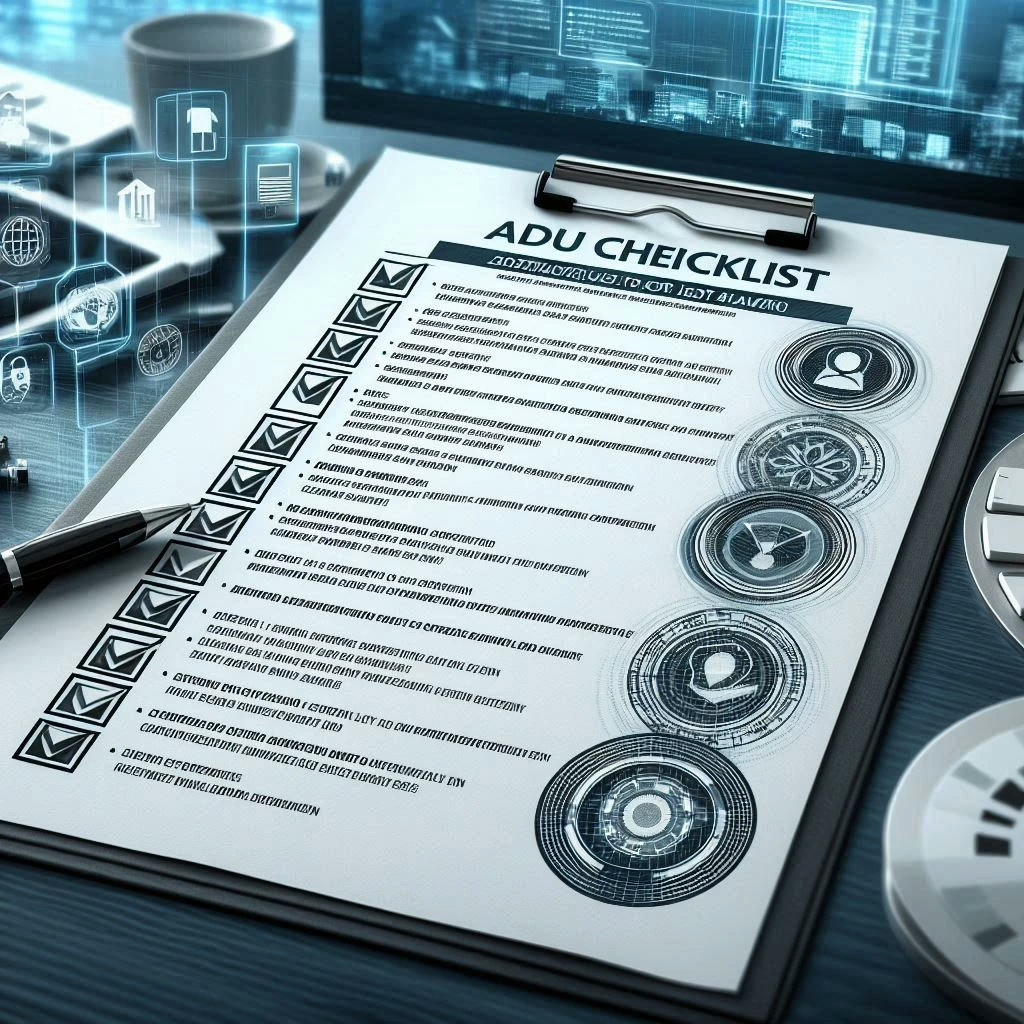Introduction
In recent years, the landscape of internal auditing has undergone a significant transformation, largely driven by advancements in technology and the necessity for flexibility in work arrangements. The growing trend of remote auditing has emerged as a response to these changes, allowing audit teams to operate effectively from various locations while maintaining the integrity and quality of their work. This shift not only reflects the evolving nature of the workplace but also highlights the importance of establishing a well-defined team dynamic in a remote environment.
As organizations increasingly adopt remote auditing practices, it becomes crucial for audit team leaders and managers to clearly define roles and responsibilities within their teams. A structured team dynamic fosters collaboration, enhances communication, and ensures that all members are aligned with the audit objectives. In a remote setting, where face-to-face interactions are limited, the clarity of roles can significantly impact the efficiency and effectiveness of the audit process.
However, remote audits come with their own set of challenges and opportunities. While the flexibility of remote work can lead to increased productivity and access to a broader talent pool, it also presents hurdles such as potential communication barriers, difficulties in maintaining team cohesion, and the need for robust technology solutions to facilitate collaboration. By understanding these dynamics and proactively addressing them, audit leaders can build resilient remote audit teams that not only meet but exceed organizational expectations.
Understanding the Remote Audit Environment
The shift towards remote work has significantly impacted various functions, including internal auditing. As organizations adapt to this new normal, understanding the unique characteristics of remote audits becomes essential for audit team leaders and managers. This section explores the definition of remote audits, their relevance, the differences from traditional audit environments, and the challenges that remote audit teams may encounter.
Defining Remote Audits and Their Relevance
Remote audits refer to the process of conducting audits without the need for physical presence at the auditee’s location. Utilizing digital tools and technologies, auditors can access necessary data, conduct interviews, and perform evaluations from various locations. This approach has gained prominence due to the increasing need for flexibility and efficiency in audit processes, especially in light of global events such as the COVID-19 pandemic, which necessitated remote operations across many sectors[1].
The relevance of remote audits in today’s corporate landscape cannot be overstated. Organizations are increasingly recognizing the benefits of remote auditing, including cost savings, reduced travel time, and the ability to leverage a broader talent pool. Furthermore, remote audits can enhance the speed of audit cycles, allowing for quicker insights and more timely decision-making[2]. As businesses continue to embrace digital transformation, the integration of remote auditing practices is likely to become a standard component of internal audit functions.
Key Differences Between Traditional and Remote Audit Environments
The transition from traditional to remote audit environments introduces several key differences that impact team dynamics and operational effectiveness:
- Communication Methods: In traditional audits, face-to-face interactions facilitate immediate feedback and relationship building. In contrast, remote audits rely heavily on digital communication tools, which can sometimes lead to misunderstandings or delays in information exchange[3].
- Data Access and Security: Remote audits necessitate robust cybersecurity measures to protect sensitive information accessed over the internet. Unlike traditional audits, where data is often reviewed on-site, remote audits require auditors to navigate various security protocols and access controls, which can complicate the audit process[4].
- Team Collaboration: Traditional audits often allow for spontaneous collaboration and brainstorming sessions. Remote audits, however, require structured collaboration through virtual meetings and shared digital platforms, which can alter the dynamics of teamwork and may require additional effort to maintain engagement and morale[5].
Potential Challenges Faced by Remote Audit Teams
While remote audits offer numerous advantages, they also present unique challenges that audit teams must navigate:
- Communication Barriers: The reliance on technology for communication can lead to misinterpretations and a lack of clarity. Non-verbal cues, which are often crucial in understanding context and intent, are diminished in virtual settings, potentially leading to conflicts or misunderstandings among team members and stakeholders[6].
- Technology Reliance: Remote audits depend heavily on technology, which can be a double-edged sword. While it enables flexibility and access to information, it also introduces risks related to technical failures, software compatibility issues, and the need for continuous training on new tools. Audit teams must be prepared to address these challenges proactively to ensure smooth operations[7].
- Maintaining Team Cohesion: Building and maintaining a cohesive team culture can be more challenging in a remote environment. The lack of physical presence may hinder relationship-building efforts, making it essential for leaders to implement strategies that foster connection and collaboration among team members[8].
Essential Roles in a Remote Audit Team
The shift towards remote audits has necessitated a reevaluation of team dynamics and roles. Building an effective remote audit team requires a clear understanding of the essential roles that contribute to a successful audit process. Below, we explore the key positions within a remote audit team, highlighting their responsibilities and the unique qualities that enhance team performance.
Lead Auditor: Responsibilities and Leadership Qualities
The Lead Auditor serves as the cornerstone of the remote audit team, responsible for overseeing the entire audit process. This role involves planning, executing, and reporting on audit findings while ensuring compliance with relevant standards and regulations. Key responsibilities include:
- Strategic Planning: Developing the audit plan, defining objectives, and determining the scope of the audit.
- Team Coordination: Leading the team by assigning tasks, facilitating communication, and ensuring that deadlines are met.
- Stakeholder Engagement: Acting as the primary point of contact for stakeholders, including management and external auditors, to communicate findings and recommendations.
Effective lead auditors possess strong leadership qualities, including excellent communication skills, the ability to motivate team members, and a deep understanding of audit methodologies. Their leadership is crucial in fostering collaboration and maintaining team morale in a remote setting[1].
IT Auditor: Importance of Technology Expertise in Remote Audits
The role of the IT Auditor has become increasingly vital in remote audits, particularly as organizations rely more on technology and digital processes. IT auditors are responsible for assessing the effectiveness of an organization’s IT controls and ensuring that technology systems are secure and compliant. Their key responsibilities include:
- Risk Assessment: Identifying potential risks associated with IT systems and processes, including cybersecurity threats and data integrity issues.
- Control Evaluation: Evaluating the design and effectiveness of IT controls to ensure they mitigate identified risks.
- Technology Integration: Leveraging technology tools to facilitate remote audits, such as data analytics software and virtual collaboration platforms.
IT auditors must possess a strong technical background and stay updated on emerging technologies and cybersecurity trends. Their expertise is essential for navigating the complexities of remote audits and ensuring that technology-related risks are adequately addressed[2].
Internal Controls Specialist: Role in Risk Assessment and Compliance
An Internal Controls Specialist plays a critical role in assessing the effectiveness of an organization’s internal controls, particularly in a remote audit environment. Their responsibilities include:
- Control Testing: Conducting tests to evaluate the design and operational effectiveness of internal controls.
- Compliance Monitoring: Ensuring that the organization adheres to relevant laws, regulations, and internal policies.
- Risk Management: Collaborating with the audit team to identify and assess risks that may impact the organization’s objectives.
Internal Controls Specialists must have a thorough understanding of regulatory requirements and best practices in risk management. Their insights are invaluable in ensuring that the audit process is comprehensive and that compliance risks are effectively managed[3].
Data Analyst: Leveraging Data Analytics for Effective Auditing
The Data Analyst is a pivotal role in a remote audit team, responsible for harnessing data analytics to enhance the audit process. Their key functions include:
- Data Collection: Gathering and organizing data from various sources to support audit objectives.
- Analytical Techniques: Applying statistical and analytical methods to identify trends, anomalies, and areas of concern within the data.
- Reporting Insights: Presenting findings in a clear and actionable manner to inform decision-making and improve audit outcomes.
Data Analysts must possess strong analytical skills and proficiency in data analysis tools. Their ability to transform raw data into meaningful insights significantly enhances the effectiveness of remote audits, allowing teams to focus on high-risk areas and make data-driven decisions[4].
Support Roles: Discussing Administrative and Logistical Support Functions
In addition to the core audit roles, various Support Roles are essential for the smooth operation of a remote audit team. These roles include:
- Administrative Support: Managing scheduling, documentation, and communication to ensure that the audit process runs efficiently.
- Logistical Coordination: Facilitating the logistics of remote audits, including technology setup, virtual meeting arrangements, and resource allocation.
- Training and Development: Providing ongoing training and support to team members to enhance their skills and adapt to remote auditing practices.
Support roles are crucial in maintaining the operational efficiency of the audit team, allowing auditors to focus on their primary responsibilities without being bogged down by administrative tasks[5].
Defining Roles and Responsibilities Clearly
Particularly in a remote environment, the clarity of roles and responsibilities within the audit team is paramount. As organizations adapt to remote auditing practices, team leaders and managers must ensure that each member understands their specific duties and how they contribute to the overall audit objectives. This section explores the significance of clear role definitions, best practices for documentation and communication, and examples of role-specific responsibilities in a remote audit context.
Enhancing Accountability and Efficiency
Clear role definitions are essential for fostering accountability and enhancing efficiency within a remote audit team. When team members know their specific responsibilities, they are more likely to take ownership of their tasks, leading to improved performance and outcomes. This clarity helps to minimize overlaps and gaps in responsibilities, which can be particularly problematic in a remote setting where direct supervision is limited.
For instance, when auditors understand their roles—whether as lead auditors, data analysts, or compliance specialists—they can focus on their tasks without confusion, leading to a more streamlined audit process. This structured approach not only boosts individual productivity but also enhances the team’s overall effectiveness, as each member can contribute their expertise without redundancy or miscommunication[1].
Best Practices for Documenting and Communicating Roles
To ensure that roles and responsibilities are well understood, audit team leaders should adopt best practices for documentation and communication:
- Role Descriptions: Create detailed role descriptions that outline the specific responsibilities, expectations, and required skills for each position within the audit team. This documentation should be easily accessible to all team members.
- Onboarding and Training: Implement a comprehensive onboarding process for new team members that includes a review of roles and responsibilities. Regular training sessions can also reinforce these definitions and adapt them as necessary.
- Regular Check-ins: Schedule regular team meetings to discuss roles and responsibilities, allowing team members to voice any uncertainties or suggest adjustments based on their experiences. This practice fosters an open communication culture and ensures that everyone is aligned with their duties.
- Visual Aids: Utilize organizational charts or role matrices to visually represent team dynamics and responsibilities. These tools can help clarify reporting lines and interdependencies among team members, making it easier for everyone to understand their place within the team[2].
Examples of Role-Specific Responsibilities in a Remote Audit Context
In a remote audit environment, specific roles may include:
- Lead Auditor: Responsible for planning the audit, coordinating with stakeholders, and ensuring that the audit objectives are met. The lead auditor also oversees the work of other team members and serves as the primary point of contact for the audit client.
- Data Analyst: Focuses on gathering, analyzing, and interpreting data relevant to the audit. This role is crucial in a remote setting where data may be accessed from various locations and systems. The data analyst must ensure data integrity and compliance with relevant standards.
- Compliance Specialist: Ensures that the audit adheres to regulatory requirements and internal policies. This role involves reviewing documentation and processes to identify compliance risks and recommending improvements.
- IT Auditor: In a remote audit, the IT auditor assesses the effectiveness of IT controls and security measures. This role is particularly important as organizations increasingly rely on digital tools and platforms for their operations. The IT auditor must communicate findings clearly to both technical and non-technical stakeholders[3].
Fostering Team Dynamics in a Remote Setting
The shift to remote work has necessitated a reevaluation of team dynamics and roles within audit teams. As audit team leaders and managers navigate this new environment, fostering a positive and collaborative team culture becomes paramount. Here are some strategies to enhance team dynamics in a remote audit setting.
Importance of Regular Communication and Check-Ins
Effective communication is the cornerstone of any successful team, and this is especially true in a remote audit environment. Regular check-ins not only keep team members aligned on objectives but also provide opportunities for feedback and support. Here are some best practices:
- Daily or Weekly Stand-Ups: Implement short, focused meetings where team members can share updates on their tasks, discuss challenges, and celebrate successes. This practice helps maintain momentum and accountability within the team[1].
- Open Channels for Communication: Utilize various communication tools such as Slack, Microsoft Teams, or Zoom to facilitate ongoing dialogue. Encourage team members to share insights, ask questions, and provide updates in real-time, fostering a culture of transparency and collaboration[2].
- Feedback Loops: Establish regular feedback sessions where team members can discuss their experiences and suggest improvements. This not only enhances communication but also empowers team members to take ownership of their roles[3].
Tools and Platforms That Enhance Collaboration
The right tools can significantly enhance collaboration among remote audit team members. Here are some essential platforms to consider:
- Project Management Software: Tools like Asana, Trello, or Monday.com can help teams track progress on audit tasks, assign responsibilities, and set deadlines. These platforms provide visibility into each team member’s workload, ensuring that everyone is on the same page[4].
- Document Sharing and Collaboration: Utilize cloud-based platforms such as Google Drive or SharePoint for document sharing and real-time collaboration. This allows team members to work together on audit reports and findings, regardless of their physical location[5].
- Virtual Whiteboards: Tools like Miro or MURAL can facilitate brainstorming sessions and collaborative problem-solving. These platforms allow team members to visualize ideas and processes, making it easier to engage in creative discussions[6].
Cultivating Trust and Rapport Through Virtual Team-Building Activities
Building trust and rapport among team members is crucial for a cohesive remote audit team. Engaging in virtual team-building activities can help strengthen relationships and foster a sense of belonging. Consider the following strategies:
- Virtual Icebreakers: Start meetings with light-hearted icebreaker questions or activities. This can help team members feel more comfortable and connected, setting a positive tone for discussions[7].
- Team Challenges and Competitions: Organize friendly competitions or challenges that encourage collaboration and teamwork. For example, a trivia quiz or a virtual escape room can provide a fun way for team members to bond while developing their problem-solving skills[8].
- Regular Social Interactions: Schedule informal virtual gatherings, such as coffee breaks or happy hours, where team members can socialize without the pressure of work-related discussions. These interactions can help build camaraderie and strengthen relationships within the team[9].
Performance Management and Feedback
For audit team leaders and managers, understanding how to effectively manage and support remote auditors is crucial for maintaining productivity and ensuring high-quality audit outcomes. This section delves into the significance of performance management in a remote audit team, focusing on setting expectations, providing feedback, and conducting performance reviews.
Setting Performance Expectations and KPIs for Remote Auditors
Establishing clear performance expectations and Key Performance Indicators (KPIs) is foundational for remote audit teams. Unlike traditional settings, where physical presence can facilitate immediate feedback and oversight, remote environments require a more structured approach to performance management.
- Defining Clear Objectives: Audit leaders should articulate specific, measurable, achievable, relevant, and time-bound (SMART) objectives for each team member. This clarity helps remote auditors understand their roles and the expected outcomes of their work, fostering accountability and focus[1].
- Tailoring KPIs to Remote Work: KPIs should reflect the unique challenges and opportunities of remote auditing. For instance, metrics could include the timeliness of deliverables, the quality of documentation, and the effectiveness of communication with stakeholders. Additionally, incorporating qualitative measures, such as peer reviews or client feedback, can provide a more holistic view of an auditor’s performance[2].
- Regular Check-Ins: Establishing a routine for regular check-ins can help ensure that auditors remain aligned with their objectives. These meetings can serve as a platform for discussing progress, addressing challenges, and recalibrating goals as necessary, which is particularly important in a remote setting where isolation can hinder communication[3].
Methods for Providing Constructive Feedback in a Remote Environment
Effective feedback is essential for the growth and development of remote auditors. However, the nuances of remote communication can complicate this process. Here are some strategies for delivering constructive feedback in a virtual environment:
- Utilizing Technology: Leverage video conferencing tools to provide feedback in a more personal and engaging manner. Face-to-face interactions, even virtually, can enhance understanding and connection, making it easier for auditors to receive and process feedback[4].
- Focusing on Specific Behaviors: When providing feedback, it is crucial to focus on specific behaviors rather than generalizations. For example, instead of saying, “You need to improve your reports,” a more constructive approach would be, “I noticed that the last report lacked detailed analysis in section three. Let’s discuss how we can enhance that moving forward.” This specificity helps auditors understand exactly what needs to change and why[5].
- Encouraging Two-Way Communication: Foster an environment where auditors feel comfortable sharing their perspectives. Encouraging dialogue during feedback sessions can lead to valuable insights and a more collaborative atmosphere, which is vital for team cohesion in a remote setting[6].
Regular Performance Reviews: Importance and Best Practices
Conducting regular performance reviews is a critical component of effective performance management in remote audit teams. These reviews not only assess individual contributions but also reinforce team dynamics and organizational goals.
- Establishing a Review Schedule: Audit leaders should implement a consistent schedule for performance reviews, whether quarterly or bi-annually. This regularity helps auditors anticipate evaluations and prepare accordingly, ensuring that discussions are productive and focused[7].
- Incorporating Self-Assessments: Encouraging auditors to conduct self-assessments prior to formal reviews can provide valuable insights into their own perceptions of their performance. This practice promotes self-reflection and can lead to more meaningful discussions during the review process[8].
- Linking Reviews to Development Plans: Performance reviews should not only evaluate past performance but also set the stage for future development. By identifying areas for growth and creating personalized development plans, audit leaders can help remote auditors enhance their skills and advance their careers, ultimately benefiting the entire audit function[9].
Leveraging Technology for Remote Audits
Technology plays a pivotal role in facilitating these remote audits, enhancing team performance, and ensuring that audit objectives are met efficiently. This section explores essential tools, data security measures, and the continuous improvement of auditing practices through technology.
Essential Tools for Remote Auditing
The foundation of a successful remote audit team lies in the effective use of technology. Several essential tools can streamline the auditing process, improve collaboration, and enhance overall productivity:
- Audit Management Software: Tools such as MindBridge and other cloud-based platforms allow auditors to manage the entire audit lifecycle from planning to reporting. These software solutions provide features for document management, task assignment, and real-time collaboration, enabling teams to work seamlessly regardless of their physical location[3][8].
- Communication Platforms: Tools like Microsoft Teams, Zoom, and Slack facilitate real-time communication and collaboration among team members. These platforms support video conferencing, instant messaging, and file sharing, which are crucial for maintaining effective communication during remote audits[6].
- Data Analytics Tools: Leveraging data analytics software can significantly enhance the audit process. These tools allow auditors to analyze large datasets quickly, identify trends, and uncover anomalies that may require further investigation. This capability is particularly valuable in a remote setting, where traditional methods of data collection may be less feasible[5][9].
Data Security Measures in Remote Audit Settings
As audits transition to remote environments, data security becomes a paramount concern. Protecting sensitive information is critical to maintaining the integrity of the audit process. Here are key measures to consider:
- Secure Access Protocols: Implementing robust access controls ensures that only authorized personnel can access sensitive audit data. Utilizing multi-factor authentication (MFA) and role-based access controls can help mitigate the risk of unauthorized access[4][6].
- Data Encryption: Encrypting data both in transit and at rest is essential for safeguarding sensitive information. This practice ensures that even if data is intercepted, it remains unreadable to unauthorized users[4].
- Regular Security Audits: Conducting regular security assessments of the tools and platforms used for remote audits can help identify vulnerabilities and ensure compliance with data protection regulations. This proactive approach is vital for maintaining trust with stakeholders and clients[5][9].
Continuous Improvement Through Technology: Evolving Tools and Techniques
The landscape of remote auditing is continuously evolving, driven by advancements in technology. Embracing a culture of continuous improvement is essential for audit teams to stay ahead of the curve:
- Adopting New Technologies: As new tools and technologies emerge, audit teams should remain open to integrating these innovations into their processes. For instance, artificial intelligence (AI) and machine learning can enhance data analysis capabilities, allowing auditors to focus on higher-value tasks[3][7].
- Training and Development: Investing in training programs for audit team members on the latest technologies and tools is crucial. This ensures that the team is equipped with the necessary skills to leverage technology effectively and adapt to changing audit environments[6][9].
- Feedback Loops: Establishing mechanisms for feedback and reflection can help audit teams identify areas for improvement. Regularly reviewing the effectiveness of tools and processes allows teams to make informed decisions about future technology investments and adjustments to their audit strategies[5][8].
Conclusion
In the evolving landscape of internal auditing, the shift to remote work has necessitated a reevaluation of team dynamics and roles within audit teams. As we conclude our exploration of building a remote audit team, it is essential to recap the key points that underscore the importance of structured approaches in this new environment.
Find out more about Shaun Stoltz https://www.shaunstoltz.com/about/
This post was written by an AI and reviewed/edited by a human.



